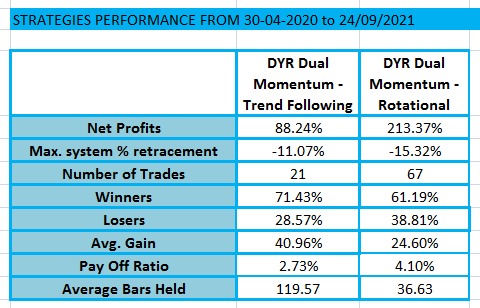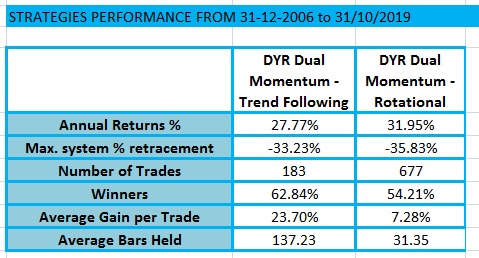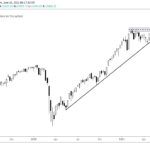Momentum Investing has been on the rage past few years! I find so many investors & mainstream media accepting momentum investing which is good! We also have an Index fund based on Momentum Investing & a lot more SmallCase portfolios & advisors! BTW, mine is also under process 😉
Countless academic papers have shown the persistency of momentum returns, some going back to even 200 years! But there’s no consensus as to why this “anomaly” persists!
We’ll look at some of the academic explanations & then I’ll put forth my thoughts on why I think it works!
Before we do that, let’s first understand what is Momentum Investing, Trend following & Value Investing!
Mumbai Local Metaphor:

Mumbai Locals are a lifeline for Mumbaikars!
And I have also had my fair share of love/ hate relationships with Mumbai locals. I used to stay at Mulund which is a small suburb in central Mumbai & my office was at Nariman Point! Anybody who’s traveled by locals would imagine the struggle!
Anyways, first things first! The trains towards Mumbai CST are called ‘Up’ trains & trains towards Thane & beyond are called ‘Down’ trains.
It’s a no-brainer that I’ll be required to catch a local going ‘up’ towards CST right?
So the decision about the direction is out of the way!
Now, as soon as you reach the platform, you find that there are three local trains…
- Slow Local which will take me around 60 minutes to reach CST.
- A fast Local which will take me about 45 minutes and,
- Another Local which will go ‘down’ towards Thane first & turn around towards CST.
Which local would you choose?
If you choose 1st Local, you’re more like a Trend follower! You’re only concerned that the train is going in your desired direction which is ‘up’. You’re least bothered whether the local is coming from Thane or Kalyan. Neither you are concerned about the rush & the ticket price.
If you choose 2nd option, you’re like a Momentum Investor! You not only want to go ‘up’ but go up faster relative to slow local! You’re least likely to be concerned about the origin of the local, its ticket price, or passenger rush.
Now comes the third option. If you choose this option, you’re somewhat like a Value Investor! Down trains usually have less rush & you can choose the seat of your liking & relax. The risk here is that the local could get delayed or canceled. In that case, you’ll reach the office late to which your boss is not going to take it kindly!
There you go!
This is of course very a simplistic explanation of trend following, momentum & value Investing!
In a nutshell, if you’re a trend follower, you are only concerned whether the stock is going up or down! If you’re a momentum investor, you’re interested in those stocks which are outperforming relative to the market or other stocks.
Is trend following & momentum the same?
I believe yes!
Because both are looking for price persistence or strength! Both are saying that the trend is likely to persist!
Why does Momentum Investing work?
In 1993, Narsimhan Jagdeesh & Sheridan Titman came out with a seminal paper in the Journal of Finance on Momentum Investing. They concluded that buying recent winners & selling losers significantly outperformed the US stock markets between 1965 to 1989.
Ever since that pioneering work came out, there have been a number of academic papers suggesting that momentum investing works. But there’s no consensus on why it works even after so much research over the last 30 years.
There are generally two explanations given for this anomaly to be present.
Behavioral:
There’s no denying the fact that our behavioral biases & mistakes affect how we make investment decisions. There are so many biases that affect the stocks prices like the disposition effect or holding on to losers too long, anchoring, herding & confirmation, etc.
Academic studies have loosely concluded that momentum investing works because of two biases, underreaction to important information or overreaction.
Let me give you an example that fits here perfectly!
Last year in March 2020, when the markets were tanking globally & we were locked inside our houses, I was out of equities for all of my clients as per my regime filter.
Regime filter is simply a switch on or off to reduce our exposure to equities and thus reducing the portfolio drawdowns.
My regime filter switched on in June 2020 & I jumped right back in the markets for me & my clients except for one. That one client didn’t invest saying that things are going to get worse from here on.
By November 2020, markets had conquered the earlier high and I again called up the client to start again. Now, he was in denial even though he knew that he should have re-invested but he didn’t. He gave me an argument that the ground reality is completely different from markets & it will go down again!
Well, just a few days ago I checked on that client again & to my surprise, he was dabbling in “Unlisted” shares, “IPO Financing & what not! He seemed very confident that the worst is behind us and everything is alright!
A complete U-turn!
There you go!
By the way, the investor is a successful businessman & losing a couple of million rupees wouldn’t move the needle for him.
Still, here we are! All of that nonsense that investors behave rationally goes down the drain!
The investor underreacted to positives and overreacted to negative information. Currently, he is underreacting to negatives and overreacting to positives.
Risk Premium:
Another argument that is made to explain momentum returns is that the momentum investors are compensated for taking on extra risk than the markets. I disagree with this argument because every strategy has a risk. Example being Value or Market, both go through massive declines. So keeping Momentum Investing in this camp is not correct as all the strategies have inherent risks.
Now, the academics are still struggling to really understand why this anomaly exists, let’s have a look at it from the practical angle.
The Opportunity Premium:
One of the biggest criticism of Momentum Investing is that it’s a very high turnover strategy.
Yes! Agreed.
But that’s what makes it more profitable. Let me explain why!
It’s because of what I would call an Opportunity Premium!
For any strategy to be profitable, you need the following 3 variables in place…
- Avg win/loss ratio
- Probability of winning and
- The number of opportunities!
A trend-following system typically has fewer winners, fewer opportunities but a huge win/loss ratio!
Why?
Because the trades are held for the long term.
While a typical mean reversion system has a large number of opportunities, higher winning % but a lower avg win/loss ratio because the trade duration is very short!
Now, for the system to be viable, a reduction in any of the above three components must be compensated by the other two!
But here’s the conundrum!
If you increase the number of opportunities, you can’t hold your trades for the long term. If you reduce the trade duration, the less distance the market can move & less expectancy or average gain per trade.
So the ideal strategy is the one that can capture the maximum gains in the shortest amount of time possible, right?
Well, Momentum Strategy can do just that!
It has a huge number of opportunities but is still able to capture those few outliers!
In my Hybrid Investing Guidebook, there are two strategies, a trend-following version & a rotational version.
While the entry & position sizing rules are exactly the same for both systems, they are only different in how they exit the trades.
Trend following version holds stocks until the trend reverses while the Monthly Rotational version keeps the strongest ones & drops the weak ones.
Here is the performance of both the systems since I published them in the Guidebook.

Both the strategies have performed wonderfully but you can clearly see that the Rotational version has crushed the performance of the Trend Following Version despite having the same entry & position sizing rules.
Why?
Well, as you can see the trade duration is just 36 days as compared to the TF version’s 120 days. It still has an average gain of 24% which means that the strategy is able to capture maximum gains in the shortest duration possible.
However, this year itself has been an outlier but the strategy performs in line with historical results as shown in the guidebook.

As you can see that the rotational version outperforms the TF version simply because it has more opportunities.
Conclusion:
Momentum Investing performs well because of the Opportunity premium & not just the Risk Premium! The strategy is able to turn around the trades quicker than the trend following version but is still able to capture a few big outliers.
However, the transaction costs, slippage & taxes are real but there have been numerous studies showing that the strategy is able to overcome those constraints!






